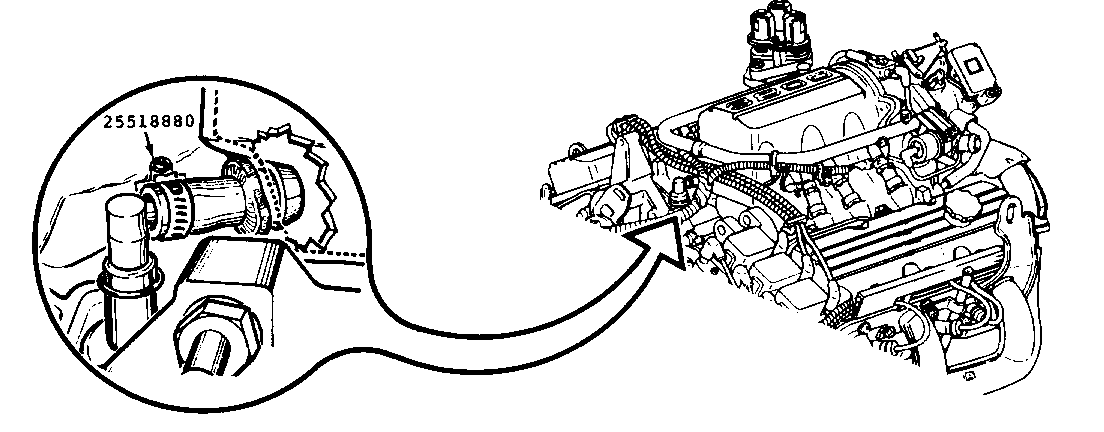POOR DRIVEABILITY PCV AND/OR GROMMET LOOSE

MODELS/YEARS: SOME 1988 NINETY-EIGHT, DELTA 88 AND TORONADO MODELS WITH 3800 ENGINE
Some 1988 models equipped with a 3800 engine (VIN Code C), may experience any of the following conditions:
- Poor idle quality - Idles above specified RPM - Engine will not start - Engine will not stay running - Trouble Code 44 (lean exhaust indicated)
Although numerous items could cause these types of conditions, one of the first checks that should be performed is to inspect the PCV valve and attaching grommets to verify that a vacuum leak does not exist. On some vehicles built prior to May of 1988, the upper PCV valve grommet may not have had the inside lip properly seated inside the intake manifold (see Figure 1).
This could allow the PCV valve and/or grommet hose to blow out from a backfire due to an engine misfire or during timing synchronization in the cranking mode, and create a vacuum leak.
If a grommet hose or the PCV valve has been blown out, reinstall it making certain that the grommets are reinserted far enough to properly seat the internal lip on the inside surface of the intake manifold. It is not necessary to apply sealer or adhesive to the grommet. If the upper grommet hose is missing, a new one can be ordered from General Motors Service Parts Operation (GMSPO) under part number 25530043. Parts are currently available from GMSPO.
To ensure that the valve and/or grommet hose will not blow out again, install a hose clamp (part number 25518880) or equivalent, around the upper PCV grommet hose, holding the PCV valve firmly in place.
Repair the engine as necessary if it has a leaking fuel injector or misfire. If a backfire occurred during a "bump" start (bumping the ignition key causing the engine to rock backwards and mis-sequencing the ignition), no attempt should be made to repair.
WARRANTY INFORMATION
Labor Operation Number: J6000 Labor Hours: .2 hrs.

General Motors bulletins are intended for use by professional technicians, not a "do-it-yourselfer". They are written to inform those technicians of conditions that may occur on some vehicles, or to provide information that could assist in the proper service of a vehicle. Properly trained technicians have the equipment, tools, safety instructions and know-how to do a job properly and safely. If a condition is described, do not assume that the bulletin applies to your vehicle, or that your vehicle will have that condition. See a General Motors dealer servicing your brand of General Motors vehicle for information on whether your vehicle may benefit from the information.
